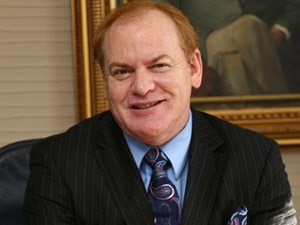
[miningmx.com] – THE South African gold mining industry would be re-modelled in 2013 following the decline in the dollar gold price, said Gold Fields CEO, Nick Holland, in an interview.
He also believed that the year would see the country’s gold mining firms making resource and reserve declarations at lower gold prices. “This will be a watershed year for reserves in South Africa,” he added.
Holland was commenting on the effects of the gold industry adopting the World Gold Council’s newly proposed methodology for reporting cash costs in which it recommends that growth and sustaining capital costs should be included in the calculation in order to provide shareholders with a clearer reflection of the true cost of producing an ounce of gold.
Gold Fields has for several years reported notional cash expenditure (NCE) in which operating costs, all capex (growth and sustaining), and near-mine exploration, are reported as a cash cost.
The World Gold Council’s standard – which it called All-In Sustaining Costs – is similar in effect but as with Gold Fields, it excludes tax, acquisition costs, and certain finance-related costs.
The council’s model is not compulsory, but Holland believes it is “a historic day as we’ve got the gold industry into a new way of reporting”. At the current gold price (last trading at $1,230/oz), he thought that a quarter of the top 20 gold producers, accounting for 68 million ounces in annual gold production, were ‘underwater’.
In South Africa, the effects of the weaker dollar gold price had been insulated somewhat by the weakness of the rand. “But the rand is so volatile. What do you price in?”, Holland asked.
“What we’ll see is mines being re-modelled so that they will be smaller, produce less volume, and end up paying less taxes,” said Holland. “There will potentially be a write-off in reserves. It will be a watershed year for reserves,” he added.
Gold Fields’ South African exposure is limited following the unbundling of its legacy mines – Kloof and Driefontein – into Sibanye Gold.
But the group is still reliant on the performance of South Deep, a mine on the west Rand that is building up to production of some 700,000 ounces/year by 2016. If this is achieved, South Deep will comprise about 33% of Gold Fields’ total pretax profits by 2020, according to analysts forecasts made in May.
Holland said the hope was for South Deep to be cash positive by the year-end, adding that the mine was heavily mechanised, and its labour more highly skilled on average than the normal deep level South African gold mine.
He couldn’t say whether the gold price had bottomed out. “Who’s to say? The equity markets are pretty bad, the debt markets are also poor. There’s really nowhere to go at the moment so it will be interesting.
“I think the gold price where it is, there will be a shakeout of marginal gold production,” he added. This would lead to lower world gold production with not even China managing to increase production at current prices.
“Although many of the core positive arguments for a strong gold price remain in place, the list of negative factors for gold has grown in recent months, not least growing investor disillusionment, and this sets the scene for what could develop into a multi-year bear market for gold, an occurrence that earlier this year we had only forecast to emerge in 2014.’
William Tankard, research director at Thomson Reuters GFMS, said today at the launch of the firm’s Italian language edition of the 2013 Gold Survey that the gold industry was heading towards a multi-year slump.
“The list of negative factors for gold has grown in recent months, not least growing investor disillusionment, and this sets the scene for what could develop into a multi-year bear market for gold, an occurrence that earlier this year we had only forecast to emerge in 2014.’
“That said, from what now represents a heavily oversold position in late June we stand neutral to cautiously positive on the price in the second half of the year, with risks to the upside based around a possible re-ignition of the dormant Eurozone sovereign debt crisis, renewed uncertainty in the United States over the debt ceiling debate, a slow-down in the equity market and indeed a delay of the tapering to the Fed’s quantitative easing measures,’ he said.
GFMS expected the gold price to remain above $1,400/oz and for gold to trade around a range of $1,100-1,400/oz next year.








